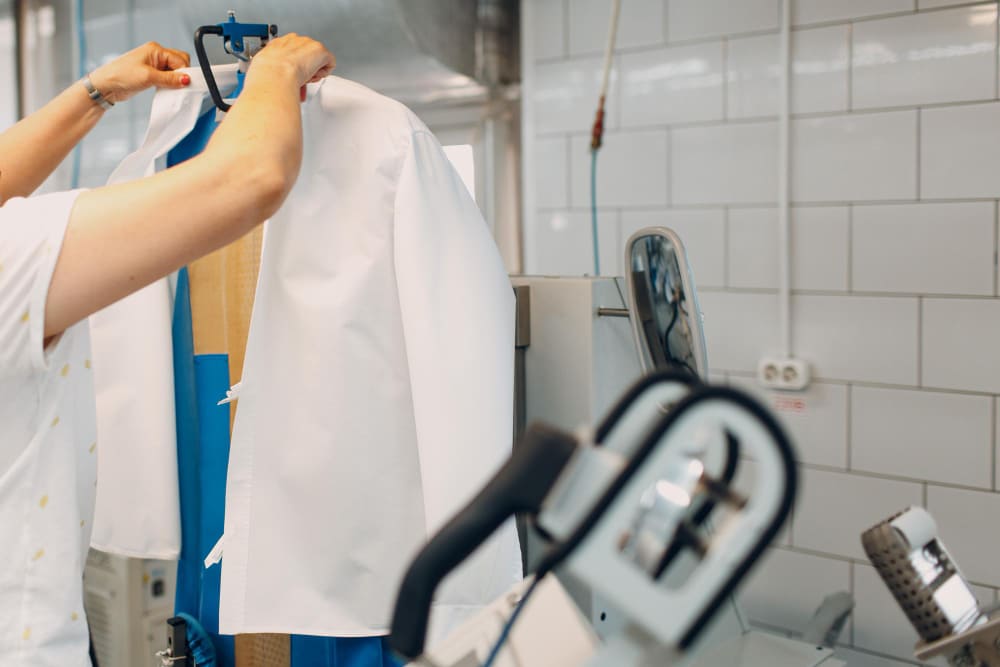-
-
11th Cross Road, Panampilly Nagar, Kochi


11th Cross Road, Panampilly Nagar, Kochi

15 Jun, 2023
Dry cleaning is a widely used method for cleaning delicate and non-water-safe garments. But have you ever wondered how it actually works? In this blog post, we will delve into the science behind dry cleaning and explore the processes and solvents involved in this specialized cleaning method. Get ready to uncover the mysteries of dry cleaning!
1. The Solvent: A Crucial Component:
Unlike traditional water-based washing, dry cleaning uses a chemical solvent to
clean fabrics. The most common solvent used is perchloroethylene (perc), although alternatives like hydrocarbon-based solvents and liquid silicone have gained popularity due to their lower environmental impact. These solvents have unique properties that make them effective in removing stains and dirt without damaging the fabric.
2. The Cleaning Process:
The dry-cleaning process begins with garment inspection and pre-treatment.
Professional dry cleaners carefully examine the garment for stains, identifying the nature and origin of each stain. They then apply specialized stain-removal techniques and solvents to treat and loosen the stains before the actual cleaning process begins.
3. Immersion and Agitation:
Once the pre-treatment is complete, the garment is placed in a large drum machine specifically designed for dry cleaning. The machine is filled with the chosen solvent, and the garments are gently agitated to facilitate the removal of dirt, oils, and stains. The solvent penetrates the fabric and dissolves the dirt particles, suspending them in the solvent.
4. Filtration and Distillation:
After the cleaning cycle, the solvent undergoes a filtration process to remove any impurities, such as dirt or fibers. Clean solvent is then recycled and reused for subsequent cleaning cycles. To maintain the quality and effectiveness of the solvent, it may also undergo distillation, which removes any remaining contaminants and reclaims the solvent's original properties.
5. Drying and Finishing:
Once the garments have been thoroughly cleaned, they undergo a drying process to remove any remaining solvent. This typically involves tumbling the garments in a machine that circulates warm air, allowing the solvent to evaporate. The dried garments are then pressed and finished using specialized equipment and techniques to restore their original shape and appearance.
6. Inspection and Detailing:
Before returning the garments to the customer, professional dry cleaners conduct a final inspection to ensure that the cleaning process has been successful. They address any remaining stains or imperfections and perform any necessary touch ups. Buttons are checked, loose threads are trimmed, and the garments are meticulously prepared for return to the customer.
Dry cleaning is a fascinating process that utilizes chemical solvents to clean
garments that cannot be washed with water. Through immersion, agitation,
filtration, distillation, and drying, professional dry cleaners effectively remove dirt, stains, and odors while preserving the fabric's integrity. The careful inspection, treatment, and finishing ensure that the garments are returned to their owners in
impeccable condition.
Next time you take your delicate or non-water-safe garments to the dry cleaner,
you can appreciate the science and expertise behind the process. Trusting your garments to professional dry cleaners ensures that they receive the specialized care they deserve, allowing you to enjoy clean, fresh, and well-maintained clothes.